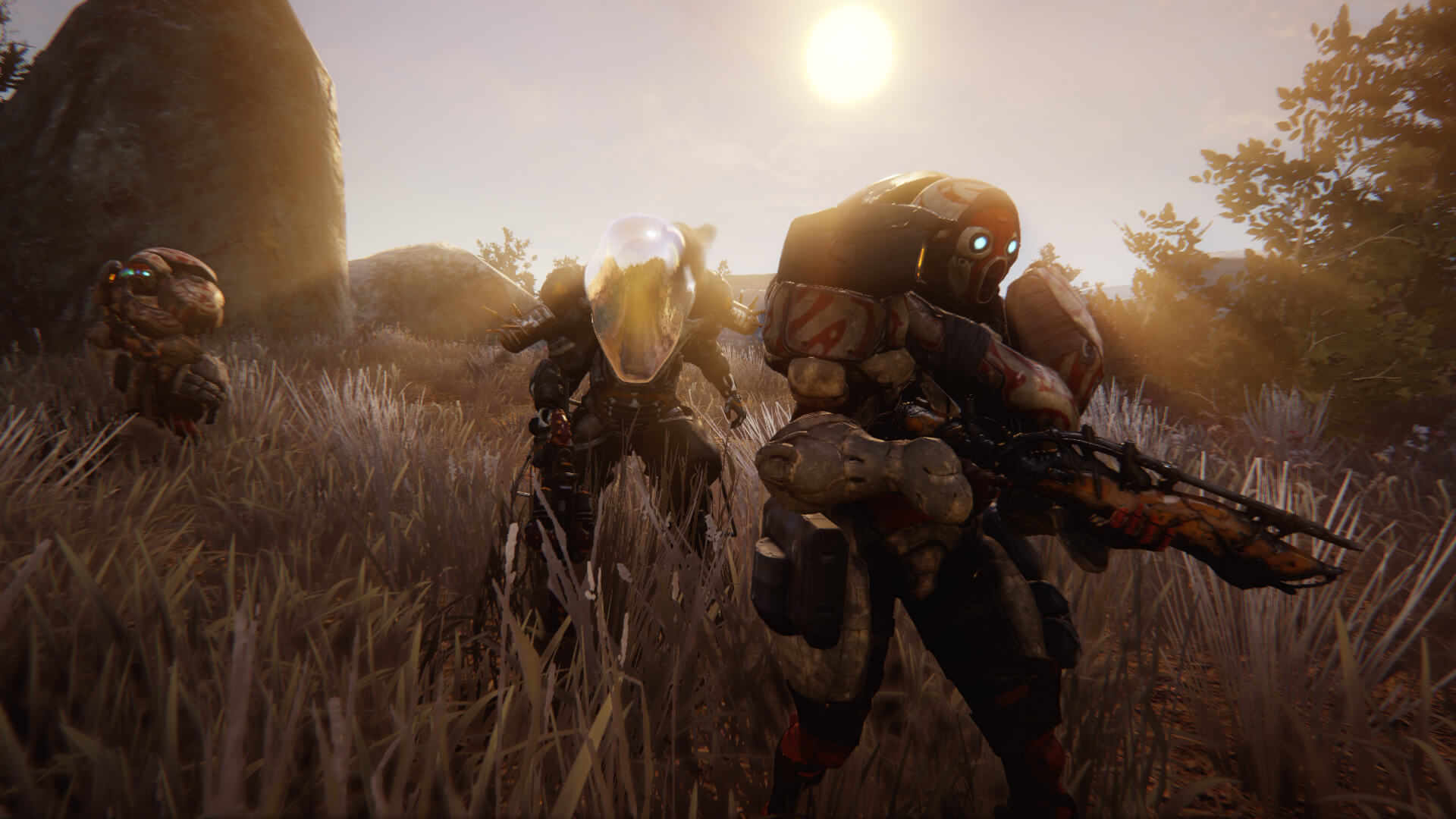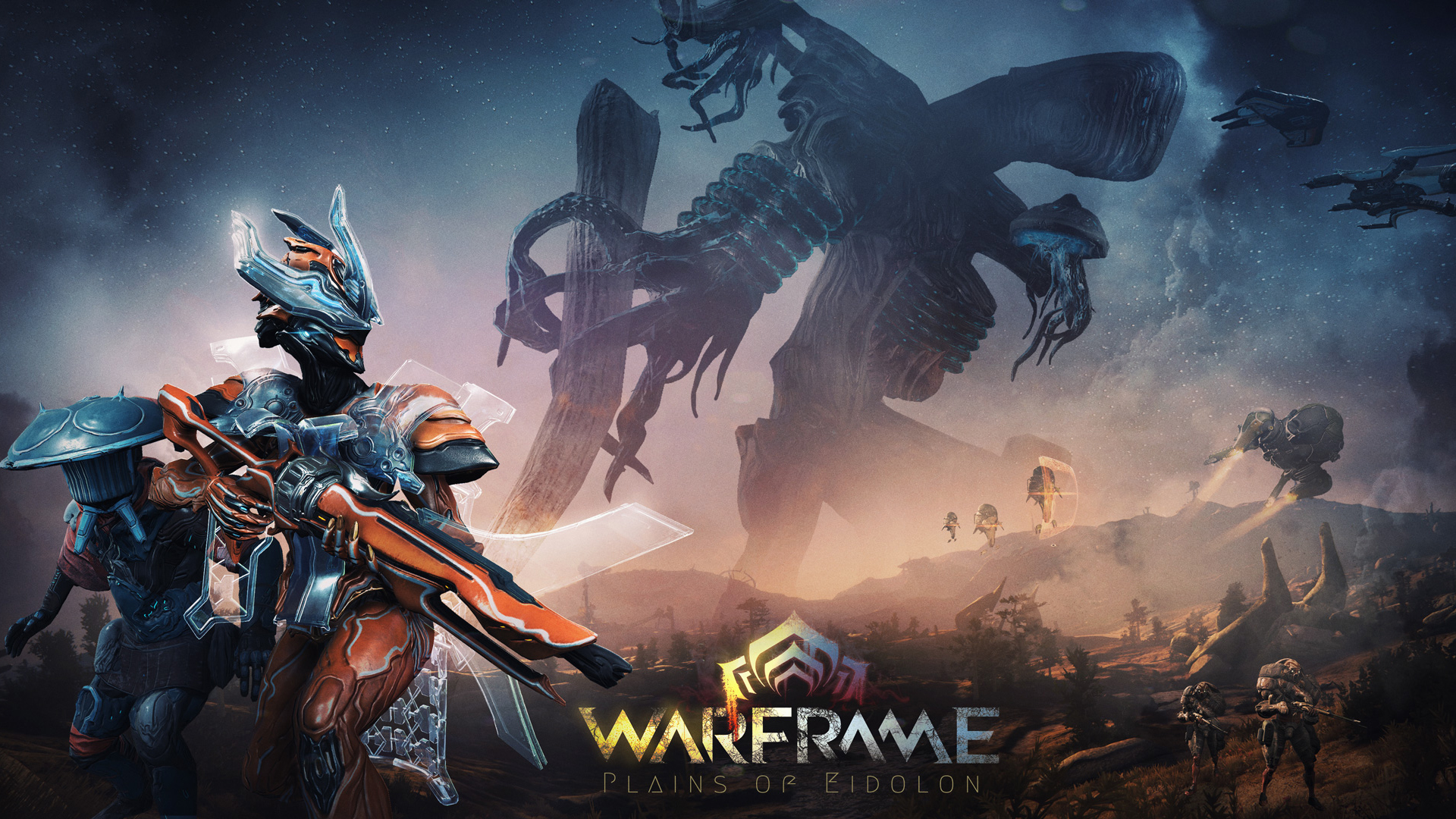
I'm willing to bet I'm not the only one who, seduced by its biggest update ever, has jumped back into Warframe. Plains of Eidolon is one of the most impressive pivots I've ever seen a game make. It adds a massive open world for players to explore, complete with new quests, fishing, mining, and deadly colossal beasts that emerge at night to tear you to shreds. While Warframe is still centered around four-player co-op, it feels closer than ever to an MMO—in a good way.
The first time I stepped out onto the Plains, I felt echoes to that moment in Fallout 3 when you emerge from the vault and walk out into the wasteland. It's a liberating experience after dozens of hours spent stalking through the cramped, procedurally generated corridors that most of Warframe's missions take place in. But, despite unlocking early on in Warframe's campaign, Plains of Eidolon feels like a complete waste of time for new players.
Welcome to grindsville
For a brand new player, Plains of Eidolon will only take about two hours to unlock. It's placed directly in a newbie's sights thanks to a mandatory new story quest, but after sinking almost 14 hours into it over the weekend, it feels like a deceptive distraction rather than a rewarding expansion for newbies like me.
Warframe is already an extremely grindy shooter and Plains of Eidolon exacerbates this problem by being completely compartmentalized from the rest of the game. All of the new features, like fishing, give resources that can only be used in the Plains and not in the main campaign. For a veteran who is already decked out in a powerful Warframe and weapons, Plains of Eidolon seems like a fantastic new area to explore and progress through. But for a new player who is already struggling to farm the materials needed to upgrade and craft new Warframes, you're far better off sticking with the main campaign.
This is a stark difference from almost the entirety of Warframe's main campaign, where resources always have some kind of use. While doing regular missions, slain enemies and broken caches frequently drop dozens of different materials that are used in the intimidatingly huge crafting system. But what's great about this is that, no matter what kinds of missions you're running, you're building a stockpile of materials that you'll eventually need.
Like most MMOs, Warframe is built upon running missions repeatedly in hopes that you'll be rewarded with a specific item drop. Most recently, I ran the Fossa mission on Venus several times to obtain the blueprints I needed in order to craft Rhino, a powerful and tanky Warframe recommended to new players. Meanwhile, I was incidentally picking up more common resources that I could put to use in other areas. But none of the activities new players can do on the Plains offer the same abundance of materials they need—and that's never communicated to them either.
None of the activities new players can do on the Plains offer the same abundance of materials they need.
This became clear to me after spending a few hours with the new fishing system. While exploring Cetus, I discovered a fish vendor who could sell me a spear I could take out into the Plains and use to catch fish. As someone that enjoys fishing in MMOs like Final Fantasy 14, Warframe's fishing system is fun and requires a bit of skill. Once I had an inventory full of alien-looking fish I eagerly returned to Cetus to see what I could use them for.
One of the most valuable resources gained from fishing is fish oil, a crucial crafting ingredient for the Archwing Launcher. This allows players to deploy their Archwing (a modular flightsuit that bolts onto your Warframe) in the Plains and fly around the map. That sounds amazing, except new players won't unlock an Archwing until after they complete a fairly lengthy quest from the main campaign. That quest gives them a blueprint they can use to craft an Archwing, which will take roughly two real-time hours to craft. And all that fish oil I harvested isn't used by my Archwing anywhere else in the game.
What's worse, the Plains is so large that it's clear they were designed to be explored with the aid of the much faster Archwing. I'm sometimes left behind by my group when doing quests in public matchmaking because they zoom off in their Archwings leaving me to hoof it on foot. I constantly feel excluded.
This is a recurring theme to everything in Plains of Eidolon and it's made worse by how obfuscated everything is. One of the vendors sells gear for your Kubrow, a dog-like creature that accompanies you on missions. Except—you guessed it—I don't have a Kubrow yet. Once again I'm leaving the Plains behind to set off on another quest from the main campaign. I didn't know how to fish or mine until I found a guide on YouTube that walked me through the basics. But now that I spent all that time learning it only to realize it has zero relevance to me as a newbie, I feel like I wasted my time.
Even the main quest that leads you there rewards you with the blueprint necessary to craft Gara, a sleek new Warframe. But in order to build Gara, you'll need find three other blueprints to craft its requisite parts. Those blueprints are a very rare drop from repeatable bounty missions offered by a quest-giver in Cetus. But here's the problem: The resources needed to craft Gara's component parts are only available until much later in the main campaign. I only learned this after looking up each of the resources on the Warframe wiki—otherwise I would've been completely clueless as to how to build Gara.
Plains of Eidolon feels bolted on and alienated from everything else.
Since adventuring out onto the Plains, I've repeatedly run into these artificial barriers where I'm excluded from some kind of activity only to find out I need to head back to the main game and progress further. It's frustrating enough to make me wonder why the Plains of Eidolon is even accessible to new players to begin with. Sure, it's an exciting update that has likely sparked interest people who have never played Warframe before. But with everything gated behind the main campaign with zero relation to Warframe's core progression, Plains of Eidolon feels bolted on and alienated from everything else.
Making matters even worse, the Plains of Eidolon is buggy as all hell. Bounties and open-world missions frequently break. Mission objectives often fail to trigger, forcing me and my party to abandon them and restart. At one point, I had to retry a mission almost six times before it began working properly. Looking at the forums and subreddit, it's also clear that veteran players are dismayed with how pitiful the rewards for completing these missions are. Digital Extremes is working on making the whole thing more rewarding and fixing the bugs, but I feel like I'm playing an early beta and not a final release.
That frustration aside, I'm having a blast playing through the main campaign. The last few years worth of updates to Warframe have made it vastly more enjoyable for new players, and its ninja-flavored parkour and third-person shooting is unparalleled. Maybe once I've progressed much further or Digital Extremes has had some time to balance it I'll return to explore the Plains, but for now I'm more than content to pretend like it doesn't exist.


























